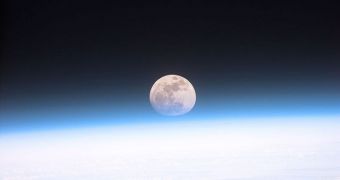For many years, experts believed that the Earth and the Moon formed some 4.537 million years ago. This is the equivalent of 30 million years after the creation of the early solar system. But new data comes to shed doubts on this conclusion, instead proposing that the planet and its natural satellite in fact formed as late as 150 million years after the Sun appeared. The two bodies were created following an impressive collision between two early planets, most likely the size of Mars and Venus, respectively. Details on the new theory appear in the latest issue of the esteemed scientific journal, Earth and Planetary Science Letters.
“We have determined the ages of the Earth and the Moon using tungsten isotopes, which can reveal whether the iron cores and their stone surfaces have been mixed together during the collision,” says expert Tais W. Dahl, the co-leader of the investigation. He carried out the work as part of his thesis project in geophysics at the University of Copenhagen (UC) Niels Bohr Institute. The other leader of the study was California Institute of Technology (Caltech) professor David J. Stevenson. The team explains that the two dwarf planets which collided to form the Earth and the Moon both had iron cores and silica mantles. Most of the planets in the solar system formed through collisions of smaller bodies that appeared around the newly-formed Sun.
“We have studied to what degree metal and rock mix together during the planet forming collisions. Using dynamic model calculations of the turbulent mixing of the liquid rock and iron masses we have found that tungsten isotopes from the Earth's early formation remain in the rocky mantle. Our results show that metal core and rock are unable to emulsify in these collisions between planets that are greater than 10 kilometers in diameter and therefore that most of the Earth's iron core (80-99 %) did not remove tungsten from the rocky material in the mantle during formation,” Dahl says. The work was conducted on the radioactive element hafnium-182, which turns into tungsten-182 once it decays.
Hafnium is more prone to bonding to silicates (rocks), whereas tungsten would rather bind to metals such as iron. This made them the ideal candidates for the new study. According to the researchers, it takes about 50 to 60 million years for hafnium to decay and turn into tungsten. But the researchers found that tungsten still existed in the rocky mantle of the planet, which bears with it the immediate implication that the Earth and the Moon did not appear 30 million years after the solar system developed. Most likely, the team says, the two bodies formed up to 150 million years later.

 14 DAY TRIAL //
14 DAY TRIAL //